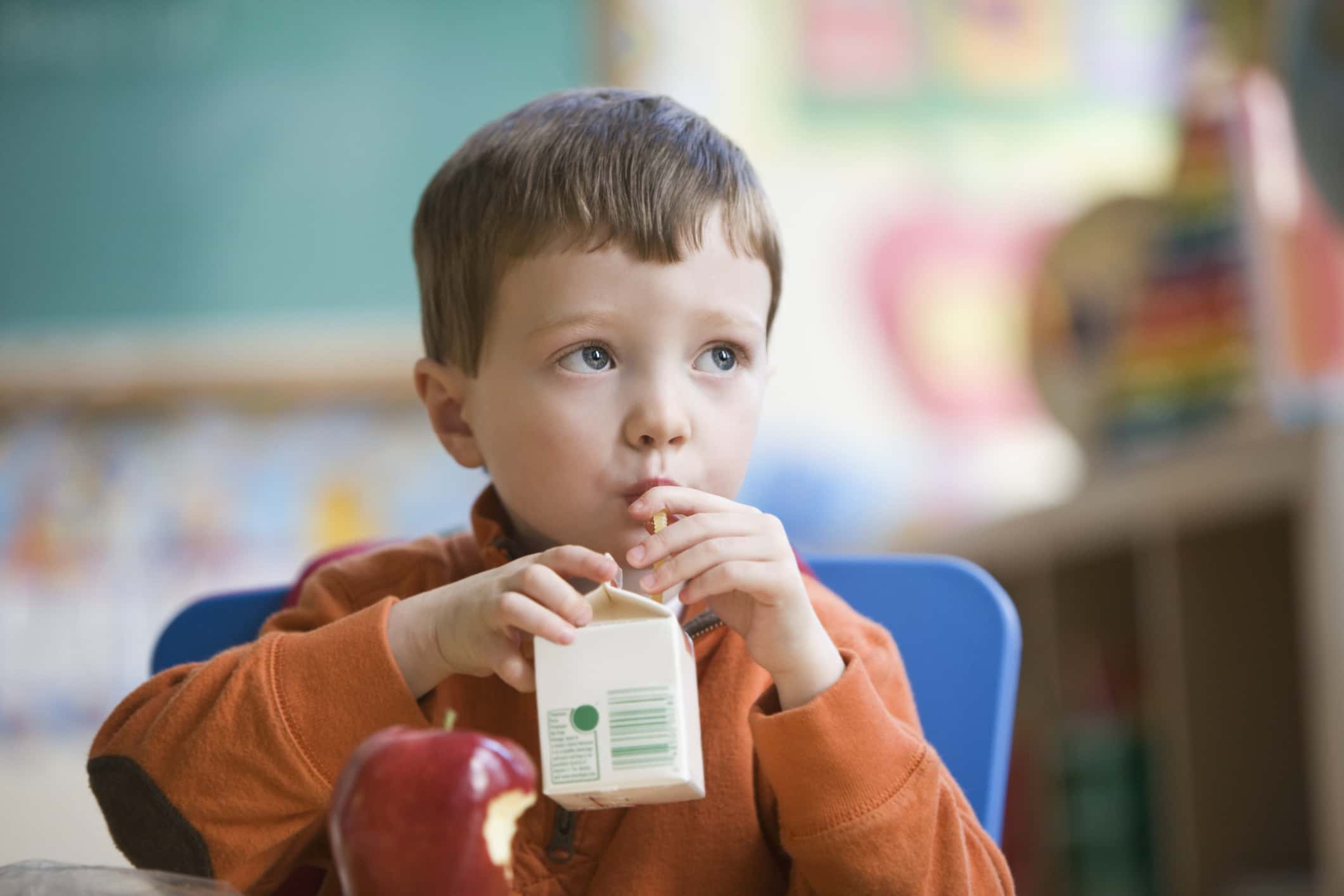The face on the side of the milk carton is still a cultural trope that evokes the same mental image in multiple generations of people. It conjures an immediate, familiar narrative: the missing child, snatched by a stranger; the worried parents, their sense of safety taken from them; and the thread of hope that someone who had a bowl of cereal that morning might see a child on the street and have a flash of recognition—and even save the child’s life.
Despite the fact that just the words “milk carton kids” can bring up such a well-worn tale, the faces of missing children were only printed on milk cartons for a handful of years. More than anything, the milk carton campaign was a symptom of the changing way society handled missing children cases, and exemplified our culture's new-found anxiety about "stranger danger."
A First for Everything
The very first milk carton to feature the faces of missing children came out of the Anderson Erickson Dairy in Des Moines, Iowa in 1984, and featured two boys. One of those boys was named Johnny Gosch, a 12-year-old paperboy who went missing in the middle of completing his route in 1982. Finding that he’d left behind a wagon half-full of newspapers, his parents knew that something was wrong. Johnny’s mother Noreen quickly called the police, but then had to wait 45 minutes for them to arrive.
It’s hard to believe, but at that time, there was no difference in the eyes of the law between a missing adult and a missing child, so the Gosch family was forced to wait three more days to make a missing persons report. Johnny's family did everything in their power to encourage law enforcement to search for their son, who some believed was a runaway. Among other things, Noreen successfully lobbied for a change in state legislation governing the ways law enforcement treated missing children.
Then, in 1984, another young paperboy went missing again in Des Moines—a 13-year-old named Eugene Martin. One of Eugene’s relatives worked at a local dairy, and they encouraged the dairy to print pictures of the two boys on the side to help raise awareness about the two cases.
Thus, milk carton kids were born. Within months, the National Child Safety Council began a program where they encouraged dairies to include the faces of missing children on their cartons. Milk was a product with a high turnover, both in terms of the amount sold and the relatively short expiration period, so many different pictures of kids could be rotated through, increasing visibility and therefore awareness of both local and national cases. Less than a year after the Gosch/Martin milk carton was printed, nearly half the independent dairies in the US had taken up the practice.
Stranger Than Fiction
Then, in 1985, one of the most notorious missing children cases of the previous decade made its way to the side of a milk carton: Etan Patz. The 6-year-old had disappeared in 1979 in Manhattan, and kidnappings like that of Patz and Adam Walsh (the son of America’s Most Wanted host John Walsh) garnered huge media attention when they happened. Now, both the 24-hour news cycle and the plaintive faces of milk cartons kids ushered in the era of "stranger danger," where parents lived in fear of random kidnappings.
"Stranger danger" became a type of moral panic reinforced by educational programs and public service announcements, among other efforts. This was despite the fact that children are much more likely to be abducted by a parent than by a random passerby. Moreover, “stranger danger” had a boomerang effect: while it may have helped create the fear that necessitated the milk carton program, the milk carton program was in turn criticized for the fear it incited in both parents and children. After all, most of the children whose pictures were printed on the cartons had actually been taken by one of their parents.
 Wikimedia Commons Etan Patz (L) and Adam Walsh (R)
Wikimedia Commons Etan Patz (L) and Adam Walsh (R)
Was It Worth It?
If we look back on the brief period where the milk carton program was active, it produced few successes. There was, however, one notable exception: the abduction of Bonnie Lohman. Lohman's mother and stepfather had kidnapped the girl from her biological father when she was three, and four years later, Lohman spotted her own photo on the side of a milk carton. Surprisingly, her stepfather let her keep a cutout of the picture, although the seven-year-old girl didn’t fully understand the significance of it all. Out of sheer luck, neighbors found the photo in a box of toys that Lohman had left at their house, and they quickly contacted the authorities.
Despite this success, on the whole it seemed like putting the faces of missing children on milk cartons did little to help them. Aside from the fear it incited, the program was also knocked for racial bias, as well as the fact that successes and failures weren’t tracked. By the late 80s, dairies had ceased printing the pictures of missing kids on their cartons entirely. Yet somehow, the very idea of it stuck in the cultural imagination.
Moving on
Although the practice was confined to a very small period, it has continued to show up as a pop culture trope. The 1990 YA novel The Face on the Milk Carton by Caroline B. Cooney portrays a fictionalized account of a girl finding her face on a milk carton, a la Lohman. Its success spawned a book series and a TV movie of the same name. The trope was also used in Big and The Lost Boys, which at least makes sense chronologically, as these both came out in the late 80s. Perhaps the more memorable take on it comes from the Blur music video for “Coffee and TV,” where a sentient milk carton featuring a missing persons notice for Graham Coxon, one of the band’s members, tries his best to reunite the adult man with his family.
Regardless of it permutations, it’s easy to see why the trope refuses to be lifted from our collective consciousness, despite the prevalence of more modern forms of child abduction alert systems such as the Amber alert. The short-lived practice embodies a frankly disturbing juxtaposition, memorializing a specific moment in time when the specter of random kidnappings was brought into what should’ve been a place of safety, the suburban American home, on that most wholesome of products: a carton of milk.














